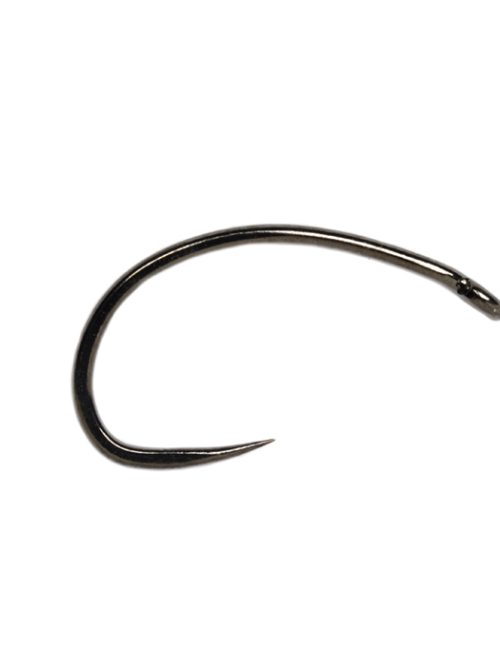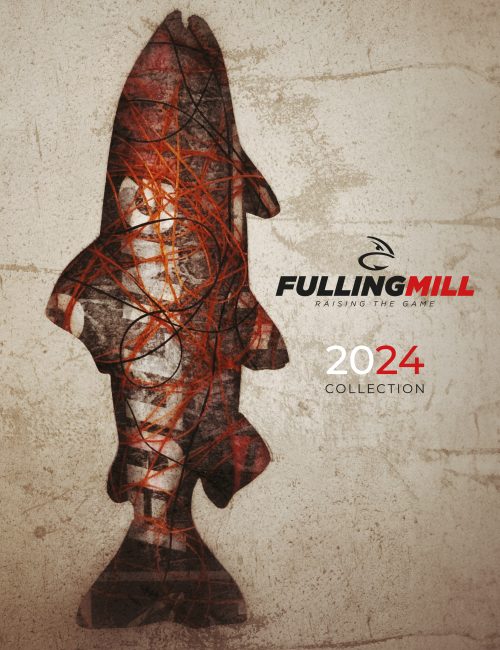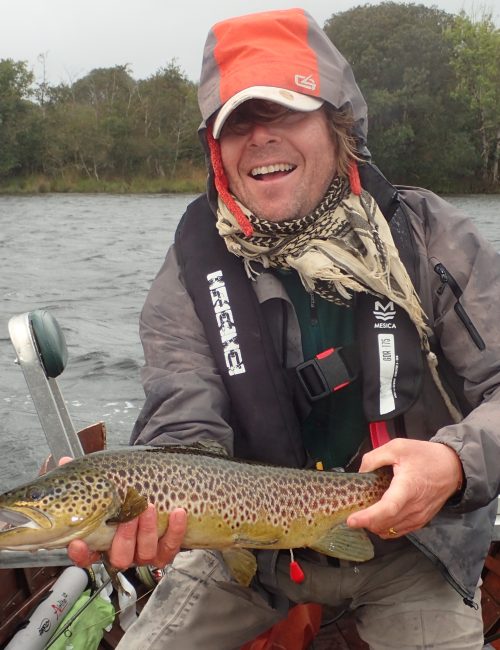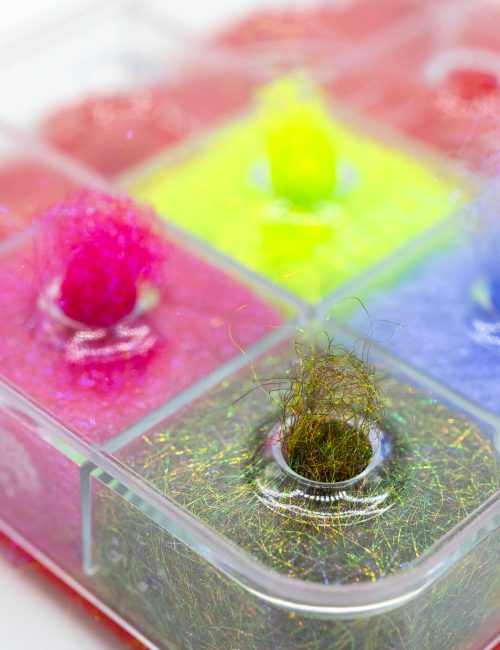Keeping it Simple Fishing on Tailwaters
Read Time: 10 | Published: 7th October 2021 | Author: James GarrettsonTailwaters. You love them, you hate them, you love to hate them or you hate to love them. They evoke more emotion than a mid 2000’s emo band trilling about teen angst and heartbreak. While they can get a bad rap for being crowded and technical, they’re always there for you. Tailwaters present an interesting niche in the fly fishing world and this post is here to help demisty them for you. As a full time San Juan River guide, I hope to share with you the thought process behind how and why I rig the way that I do for fishing on tailwaters. The San Juan is a tailwater so I guess you could say this is my life. If you hate tailwaters, then you’re really going to hate this so now is the time to check out my piece on creeks.

Tailwater: A Definition and Clarification.
If you’re newer to fly fishing, a tailwater is simply water directly below a hydraulic structure—basically, a dam. With this in mind there is a difference between a water below a dam and what most fly anglers would define a “tailwater.” Just because a river is below a dam doesn’t mean it will fish like your angler definition of a tail water.
When fly anglers talk about tail waters they are usually referring to fisheries with cold water, a large biomass of trout, and high populations of midges. Tailwaters are almost synonymous with midge fishing as well as various mayflies species like Baetis, PMDs. When I think of tailwaters my mind turns to midges and their life cycle as well as the life cycle of the local mayfly population, on the San Juan that would be baetis. Vaguely understanding the life cycle of these insects unlocks the greatest key to tailwater fishing.
Other common food staples are scuds. Sometimes it pays to know what lives in the reservoir above the dam as they usually end up getting sucked through the dam. This could be mysis shrimp and chunks of kokanee salmon flesh, for example.
The Column and The Midge
If I focused on other bugs when fishing on tailwaters this would quickly turn into a book. I’m all about the KISS approach so let’s just make this about midges which are arguably the key stone insect in tailwaters.
Why?
Because most tailwater trout are directly tied to the midge cycle as they move vertically through the water column.
What is the water column?
It’s depth. Now take depth and break it into thirds starting from the surface. You have high column, mid column, and low column.
Why is this important?
Because trout will be focused on midges in various parts of their life cycle in various parts of the column. Often trout act like little porpoises following the midges through the water column and locking into certain cycles of their life. Trout on the San Juan and other tailwaters will become notoriously “column locked”. Thus, presenting your fly in the right part of the water column is paramount. Too heavy and you’re under them. Too light and you’re over them. These are lazy tailwater trout with an endless buffet line of midges. They don’t have to move to eat but they do have to position themselves in the water column to access this buffet line.
Midges
To keep it simple. Midges of the order diptera—actually let’s not get sciency, I got a C in biology.
Lets focus on the basic 3 forms of a midge:
- Larva, a worm like thing, that lives on the bottom
- Pupa, the larva “pupates”, forms a gas bubble and wiggles its way up to the surface.
- Adult, the midge sheds the larval exoskeleton on the water’s surface and flies away. During a midge hatch it sometimes looks like popcorn coming off the water as the adults shed their exoskeleton .
This is an extremely basic breakdown of the midge cycle and probably not very scientific but hey, I’m a guide not a scientist. It’s a good idea to understand what these things look like not so much to “match the hatch” but to help you better match the column. If you’re in a fishery with a lot of midges and don’t see any adults buzzing around, the fish are probably down low eating larva. Or, maybe you see a bunch of midge activity but not a lot of rising fish—they may be mid column intercepting pupa on the way up. If you see risers or fish with their backs and tails coming out of the water, they’re eating the adults or the pupa just under the surface.
Looking at bugs can help give you a better idea of where the trout are. I have caught fish on the “wrong” pattern in the right column. I use the midge cycle to get a better idea of how to rig.
Fly Fishing in It’s Simplest Form
If you had to boil down fly fishing to its simplest form it would be: “Where are the trout, and how do I get a fly to them.” Often most anglers fish too heavy and don’t get natural drifts or even get under the feeding trout, especially in shallow water.
When fishing unweighted midges with split shot, I always use fluorocarbon. Fluorocarbon sinks as opposed to nylon which floats. I usually splice in flouro at the end of a nylon leader and use the junction knot to affix my split shot. I like Fulling Mill floruo in sizes 5.5x-7x. Thinner tippet cuts through the water better and you get a better sink rate. When fishing smaller midges (>18) I rig eye to eye as to not have a knot block the hook gap.
Final Thoughts
- The most important decision I make when rigging clients up is their depth and weight, then size/profile of fly, then color. Flies don’t matter, attributes of flies do. Usually I start on the heavier side and lighten up my rig until I can dial in where the fish may or may not be suspended. If I can see fish, I always try to rig to their holding and or feeding depth. I’m a huge fan of fishing double indicator rigs, especially when the fish are high column and I’m fishing small split shot or light nymphs. I LOVE Fulling Mill’s new pinch on indicator. If you’re familiar with palsa indicators, the Fulling Mill pinch on is a superior product. It’s more durable and the color doesn’t bleed.

- I use a second indicator for a few reasons. Two indicators “point” to where your flies are and the pinch on indicator is ridiculously sensitive. Plus, putting an air-lock or corq two feet from your weight on a long leader makes casting very cumbersome—especially for new clients. I usually keep my corq or air-lock two feet above my pinch on.
- It blows my mind how many times I see anglers continue nymphing during a full blown hatch. While you can still pick up these high column fish with light split shot or lightly weighted nymphs, a dry fly can do some serious damage. So often we have the “when in doubt nymph it out” mindset, but often these fish will more aptly take a dry during these conditions.
- Lastly, if fish are really picky and pressured, I find them more apt to take a smaller fly. Often I’ll drop to #26’s or even #28. On the other end of the spectrum is the hand grenade approach. If I can’t get them to eat I’ll throw something wild like a mop to try and elicit a reactionary eat.
All About Column
When you think about tailwaters, think about the column. Let the fish and the bugs tell you how to rig. If you’re new, try rigging lighter than you think. You’ll be surprised how fast small split shot and small tungsten beads get you down without distorting your drift.
There is no silver bullet or magic fly, depth and weight will often save an otherwise slow day. Have fun, mix it up, and catch some fish.

If you want to read more by James, check out his other articles on our blog.






